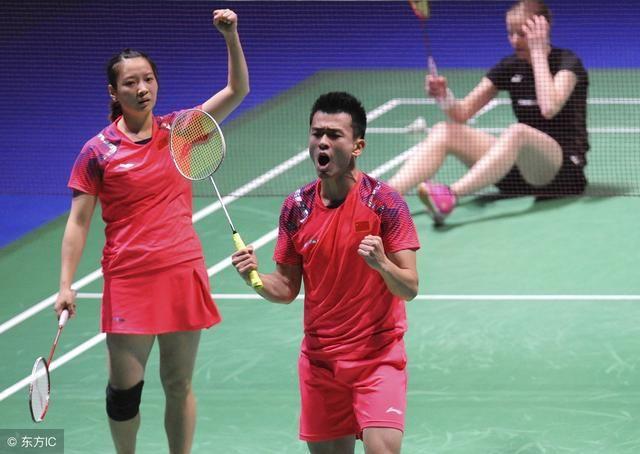体育课心率变化曲线图片
Understanding Heart Rate Curves in Sports
In sports and fitness, monitoring heart rate curves can provide valuable insights into an athlete's cardiovascular response to exercise. Let's delve into the significance of heart rate curves, how they are generated, and what they reveal about an individual's fitness level and training intensity.
1. What is a Heart Rate Curve?
A heart rate curve, also known as a heart rate profile or heart rate response curve, is a graphical representation of how an individual's heart rate changes over time during physical activity. It typically plots heart rate (beats per minute) against time or exercise intensity.
2. Generating a Heart Rate Curve:
The process of generating a heart rate curve involves continuous monitoring of heart rate during exercise using wearable fitness trackers, heart rate monitors, or specialized sports equipment. Modern devices can record heart rate data in realtime and create detailed curves based on the collected information.
3. Interpreting Heart Rate Curves:
Baseline Resting Heart Rate:
Before exercise, the baseline resting heart rate establishes a reference point. It reflects the individual's cardiovascular fitness and overall health.
WarmUp Phase:
At the start of exercise, there's often a gradual increase in heart rate as the body adjusts to increased physical demands.
Steady State:
During steadystate exercise, the heart rate stabilizes at a relatively constant level. This phase indicates the intensity and duration of the activity.
CoolDown Phase:
After exercise, the heart rate gradually decreases as the body returns to its resting state. A smooth decline in heart rate is indicative of good cardiovascular recovery.
Heart Rate Variability (HRV):
Variations in the time intervals between heartbeats can provide insights into an athlete's recovery status and readiness for subsequent training sessions. 4. Significance for Athletes:
Training Intensity:
Heart rate curves help athletes gauge the intensity of their workouts. Different training zones (e.g., aerobic, anaerobic) correspond to specific heart rate ranges, guiding athletes to train at optimal levels for their goals.
Fitness Assessment:
Changes in heart rate curves over time can indicate improvements in cardiovascular fitness. A more efficient heart rate response to exercise suggests enhanced fitness levels.
Recovery Monitoring:
Monitoring heart rate curves during recovery periods assists in assessing how well the body is recovering from training stress. This information guides decisions on rest days, active recovery, or subsequent training intensity.
5. Guidelines for Heart Rate Curve Analysis:
Individual Variability:
Understand that heart rate responses can vary widely among individuals based on age, fitness level, genetics, and other factors.
Consistency:
For accurate analysis, ensure consistent measurement conditions (e.g., same time of day, similar hydration status) when comparing heart rate curves over time.
Contextual Interpretation:
Consider the type of exercise, environmental conditions, and other contextual factors when interpreting heart rate curves. For example, heat and humidity can impact heart rate responses during outdoor activities.Conclusion:
Heart rate curves are valuable tools in sports and fitness for assessing training intensity, monitoring cardiovascular fitness, and optimizing performance. By understanding and analyzing these curves effectively, athletes can make informed decisions to enhance their training outcomes and overall wellbeing.
欧洲杯直播
MORE>-
09-19加纳乔本赛季造球超过姆巴佩,近天进球和桑乔今年一样多
-
09-19制造胜率高达%,仅次于弗格森!滕哈格真是杯赛专家?
-
09-19孔帕尼三连胜:执教拜仁开启追求蓝图的新篇章
-
09-18破案了!国足换帅叫停原因找到,强赛计划有变,伊万阴谋得逞
-
09-18杨政回应未通过体测:早知道要体测就不参选已尽力否认嘲笑牟进宏
-
09-18贾巴里·史密斯:火箭的完美副手与宝贵特质
-
09-18不愧名帅!水庆霞近轮豪取分:击败女足卫冕冠军武汉!
-
09-18韩网评选世界赛阵容竟落选
-
09-17孙杨张豆豆晒合照送中秋祝福
-
09-16王楚钦输球是假球?许昕说实话了→
-
09-16阿塞拜疆正赛:皮亚斯特里夺冠,塞恩斯&佩雷兹退赛
-
09-16冠军战霸气完封波多黎各,日本棒球队世界杯夺冠,缔造连霸
-
09-15周六德甲:莱比锡红牛柏林联合
-
09-15全国田径锦标赛:谢震业迎奥运后首秀,秒小组第晋级
-
09-15准备现场督战,弗洛伦蒂诺率领皇马出征客场
-

2024今晚香港开特马开什么六期,答案解析解释落实掌握天下事_中级版33.291
在2024年的香港特马开奖活动中,众多彩民和观众都在关注着每一期...
-

2024年新澳门王中王资料,答案解析解释落实掌握天下事_3D6.3
在信息爆炸的时代,掌握最新的资讯成为了每个人不可或缺的能力。20...
-

最准一肖一码100%中,答案解析解释落实掌握天下事_辅助版2.11
在博弈领域,”最准一肖一码100%中”这一说...
-

黄雅琼黄凯祥分手事件解析
黄雅琼和黄凯祥是一对知名的明星情侣,他们的分手事件引起了广泛关注。在...
-

最准一肖一码100%香港78期,答案解析解释落实掌握天下事_平台版8.52
在当今信息爆炸的时代,人们对于获取准确信息的需求日益增长。特别是在博...
- 搜索
- 最近发表
-
- 曼城再创辉煌,欧冠新篇章开启,哈兰德金球梦触手可及
- 新赛季欧冠今晨开踢皇马拜仁利物浦等队首战告捷
- 场分钟!日本国脚在利物浦的挣扎与夏窗留队之惑
- 欧冠曼城国际米兰欧冠豪门对决!曼城誓斩国米,卫冕梦能否再燃战火?
- 新世纪巴萨失利最多的比赛是拉菲,皇马又何尝例外?
- 中国女排队长袁心玥已抵达瓦基弗银行俱乐部,开启留洋生涯
- 怒了米兰球迷赛后齐唱粗话抗议:把你们的蛋蛋拿出来!
- 有仇不报非君子🤣吕迪格庆祝时被队友围殴姆总左右开弓狂扇后脑
- 英格兰足球锦标赛
- 看个比赛欧洲杯要多少钱呢
- 辽宁体育篮球决赛
- 网络体育赌博黑钱吗
- 罗伊斯参加2024欧洲杯吗
- 皇马欧冠决赛输球
- 阿根廷vs乌拉圭世预赛
- 西班牙国民体育赛事
- 英国如何看欧洲杯比赛结果
- 英超什么时候开始新赛季
- 美洲杯欧洲杯哪个级别高
- 湖州师范体育特招
- 标签列表
-
- 2024年欧洲杯主办国 (17)
- 2024欧洲杯比赛时间 (20)
- 欧洲杯参赛球队有几支 (9)
- 2024欧洲杯百度百科 (21)
- 2024欧洲杯杯 (9)
- 2024年欧洲杯预选赛 (14)
- 2024年欧洲杯开幕时间 (10)
- 2024欧洲杯完整赛程表 (10)
- 2024欧洲杯主办城市 (17)
- 欧洲杯为什么没有中国 (13)
- 在哪里可以看欧洲杯预选赛 (11)
- 2024欧洲杯预选赛 (11)
- 欧洲杯在哪个国家举行2024 (12)
- 2024欧洲杯全部赛程 (10)
- 欧洲杯为什么没有直播 (15)
- 欧洲杯一共多少球队 (13)
- 欧洲杯历届冠军一览表 (10)
- 欧洲杯 (14)
- 欧洲杯赛程 (11)
- 直播吧官网 (10)
- 足球即时完整比分 (12)
- 2022年世界杯 (12)
- 直播8 (10)
- 直播吧 (21)
- 直播软件 (10)
